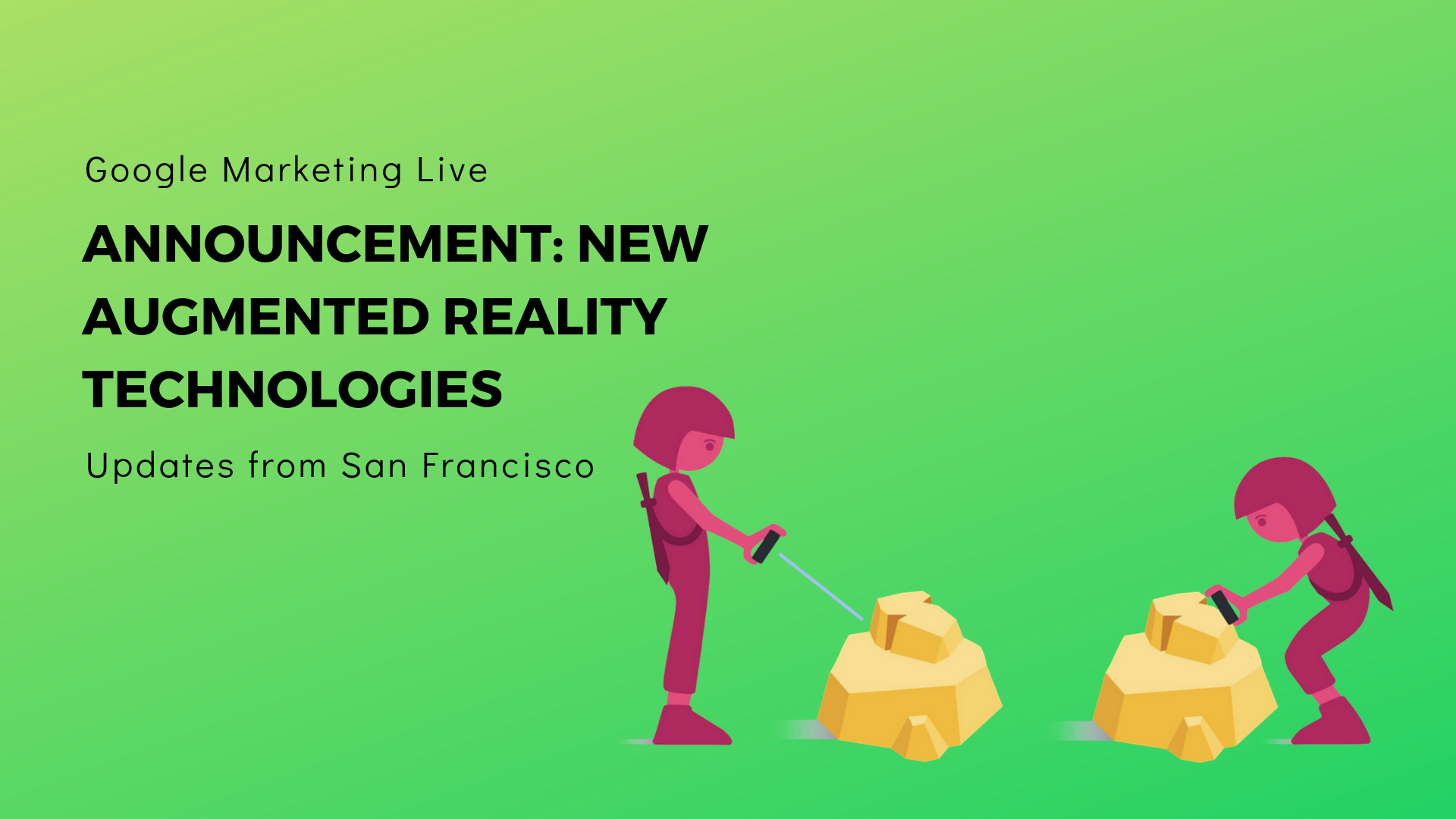The Pure SEO Team
The editorial team at Pure SEO is super proud of our content. Follow our official channels on social media.


Google continues to astound us with new and innovative products being announced at this year’s Google Marketing Live event. Earlier today, a talk with Clay Bavor, Google’s Vice President of Augmented and Virtual Reality, uncovered some exciting new announcements about the future of how we interact with advertising.
Augmented reality is the concept of adding digital components to our own live reality. If you think about it, it is the big next step for the internet. We have developed touchscreens, face-to-face calls, intuitive advertising – all these tools to make computers more and more accessible. Now, Google has the technology to bring AR to all of us.
Why is this such a natural progression? Bavor explains how humans are intensely visual animals – 30% of our neurons are devoted to seeing. AR brings the same kind of perceptual capabilities that we have into our devices – making them more human, and in turn more accessible and easier to access.
Google’s AR comes in two main forms: vision in and vision out. Vision In has the ability to enable AR to see and sense the world just like we do. Vision Out can bring rich visual information to us by building off what we can physically see in front of us.
For Marketers, AR provides three main advantages:
There are a series of tools and aspects of Google that are set to integrate augmented reality. These are the products that Google announced:
The AR Core toolbox is a set of simple but powerful tools developed by Google for app developers. It enables smartphones to understand the physical world and overlay content onto that world. It provides app developers with an easier pathway to integrating AR into consumer-driven apps.
These tools can facilitate consumers with pre and post-purchase journeys. In terms of pre-purchase, it can provide them with the options to customise and visualise products they are considering purchasing from the comfort of their own home. They can see how furniture would look in their home, or what the specs of the car they are thinking of purchasing will look like all put together.
The post-purchase journey is facilitated by the continuation of AR throughout the ownership of the product. AR can serve as a key tool for consumer education, through, for example, the development of a guided manual that works by pointing your device at certain elements of the product. Or it can serve as a brand experience that customers have access to post-purchase. The opportunities are endless.
Google Lens is a tool that anyone can use – it turns your smartphone’s viewfinder into a visual search box. You just have to point your phone at something and Google will do an automatic search for you. It can also translate in real time, add events to your calendar, search related product items for you to shop online, and more.
When you opt to search a physical item into Google, Lens will choose the keywords of the item just from analysing the photo. This is great for identifying keywords that may be harder for us to realise immediately but will be incredibly helpful in further searches.
When you want to use Lens to take a specific action on something, it has the ability to do math, or find certain information out for you. Bavor uses the example of being at a restaurant with friends, pointing your viewfinder at the bill and asking Lens to work out how to split it and how much to tip for you.
Google also wants to give businesses the ability to create curated brand experiences within Google Lens. For example, allowing print magazines to be able to connect photographs and content within the magazine with online content, using Google Lens as a tool to connect the two elements.
Last week, Google announced that AR is coming to Google Search itself. This is an initiative to try and make AR available easily to more people. They have been developing this tool with NASA using the Mars Curiosity Rover as a platform for an AR experience, and are in the process of developing similar features with Wayfair Furniture.


Swirl is a completely new feature that will be officially announced in June. It is a feature for Immersive Display Ads within Google. This means it lets you bring engaging 3D assets directly into your Google ads. Consumers will have the ability to spin the product around directly in the ad.
This will allow them to learn more about the product by reading the information directly on the 3D model. It will also feature the option for brands to add layers of content on top of their 3D renders. This tool will have powerful benefits for both advertising and education.
What we know so far is that investing in a 3D asset will return powerful results for your business. One single high-quality asset can be utilised across multiple Google AR features as they will all be integrated. We also know that Google has joined forces with companies such as Adobe, Facebook and Target to work together to develop standards for 3D models.
The talk ended with a note that if there is one thing to take away, it’s to get your business started with 3D models now – because AR is coming fast and it will hit the market running.
Google has released a guide to getting started with AR which they hope will be a good starter kit for any business who wants to be ahead of the game when this comes out. Think about the massive impact this next big step will have on computing and advertising – and on your business!





